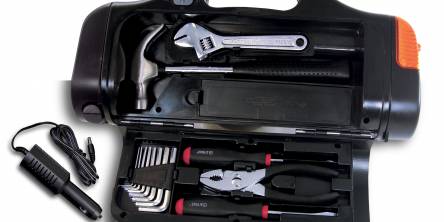Pest-Free Living: Simple Strategies for Every Home

Key Takeaways
- Proactive pest control reduces risks to health and property and can save homeowners significant expense over time.
- Consistent cleaning and home maintenance are easy strategies that make a substantial difference in defending against pests.
- Modern pest prevention favors eco-friendly, integrated approaches over routine chemical usage.
Table of Contents
- Why Pest Prevention Matters
- Home Habits That Keep Pests Away
- Sealing Entry Points: The First Defense
- Eco-Friendly Pest Management
Why Pest Prevention Matters
Pests are far more than a nuisance; they represent genuine threats to a home's structure and personal well-being. Insects and rodents not only trigger allergies and spread bacteria, but can also create hidden problems that may go undetected for months.
The National Pest Management Association estimates that termites contribute to over $5 billion in annual property damage in the U.S. alone, and most home insurance policies won’t cover these repairs.
Small rodents, meanwhile, can spread diseases such as hantavirus and salmonella, which can be especially dangerous for children and elderly family members. Knowing this, it's clear that a proactive approach is key to maintaining a safe and healthy home.
Often, infestations begin inconspicuously—rodents nest behind walls, or cockroaches hide under fridges and appliances. These issues escalate quickly if left unchecked and lead to complicated, expensive cleanups. Homeowners interested in safeguarding their investment often consult professionals for effective pest control services to catch vulnerabilities early and avoid larger problems.
These experts can also identify potential entry points and recommend structural or behavioral changes to deter future infestations. Developing a prevention mindset establishes a strong barrier against hidden dangers before they take root.
Home Habits That Keep Pests Away
Establishing a cleanliness routine throughout living spaces is one of the most reliable and straightforward strategies to prevent pests. Small, everyday actions combine to make a significant impact. Kitchens and dining areas should always be wiped down after use, as insects like ants, cockroaches, and flies can detect trace amounts of sugar or oils.
Vacuuming and mopping regularly removes crumbs, pet hair, and potential eggs that pests can use as a food source or breeding ground. Trash bins, especially those in kitchens, should be lined with lids that close securely; this not only helps with odors but also deters opportunistic animals and insects.
- Clean all food prep and dining surfaces after eating or cooking.
- Transfer dry goods and snacks from original packaging into sealed, airtight containers.
- Don’t neglect hidden spaces—clean beneath appliances, behind the toilet, and inside cabinets.
- Fix leaks promptly to prevent damp spots that can attract roaches and silverfish.
- Empty and clean pet food bowls after each meal, especially overnight.
Sealing Entry Points: The First Defense
Creating a physical barrier to entry is one of the most cost-effective, preventative steps against all types of pests. Surprisingly, many common invaders need only tiny cracks or holes to get through—a mouse can fit through any gap wider than a dime, and some insects need mere millimeters. Homeowners should routinely inspect the exterior of their properties, including foundations, door frames, windows, and even utility lines, as these are frequent access points for pests.
- Use caulk, weather-resistant sealants, or steel wool to plug holes near pipes and cables.
- Swap worn-out weather stripping and damaged door sweeps for new, snug-fitting varieties.
- Repair and reinforce screening on windows, attic vents, and crawl spaces with strong mesh.
- Patch foundation cracks and monitor basements for mole tunnels and rodent tracks.
Resealing these susceptible areas doesn’t simply help with pest prevention; homeowners often enjoy added energy savings by eliminating drafts. Making physical checks a seasonal habit creates another layer of protection, especially as weather changes make pests more likely to seek shelter indoors.
Eco-Friendly Pest Management
Eco-friendly pest control is gaining popularity due to growing environmental and health awareness. Integrated Pest Management (IPM) encourages homeowners to address root causes before using chemical treatments. Natural deterrents like diatomaceous earth and boric acid are used cautiously. Reducing chemical spray reliance through gardening, planting herbs, and using essential oils can protect the family and the environment.
Similar Articles
Emergencies fall into the category of the unexpected. No one wants to experience a crisis, but emergencies are one of life’s unknown factors you can prepare for.
Your fence is one of the first things people notice when they look at your home. It frames your yard, defines your property line, and can either add to or detract from your home’s curb appeal.
In today’s fast-paced world, families face evolving lifestyle challenges that traditional furniture solutions often fail to address.
Your front door is the face of your home. It's the first thing guests notice and the last impression they carry. Whether you're aiming for a cozy welcome, curb appeal for resale, or just want to feel good walking in every day, front door decor is a game-changer.
There’s something magical about a backyard pool. It’s more than a place to cool off during the summer—it’s where your kids learn to swim, where birthday parties become legendary, and where quiet Sunday mornings transform into family traditions.
Rugs do far more than add color and texture to your floors—they define spaces, protect surfaces, and add a sense of warmth and comfort. But while many people spend time choosing the perfect rug for their home, they often overlook a key component that’s just as important: the rug pad.
Water is one of the most vital resources on our planet, and its conservation has become a global priority. As populations grow and climate patterns change, efficient water storage and management solutions are more important than ever.
Home renovation is more than just a trend; it's a way to breathe new life into your living space
In the modern age of interior design and home living, finding the perfect furniture that blends aesthetic appeal, durability, and comfort can be a daunting task.









